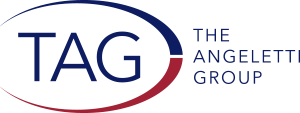With razor-thin margins and changing reimbursement rates, hospitals and their health systems are increasingly turning to philanthropy to modernize and build facilities, fund new programs, and recruit and retain talented medical staff. As part of that reality, planned giving should be an important part of any healthcare fundraising strategy.
While the landscape is changing, historically hospital fundraising has been sporadic and focused on major capital projects. It also, for many organizations, was transactional. In this fast-paced conversation (see link below), Jay Angeletti and Joe Tumolo of Gift Planning Development, LLC, discuss the changing world of healthcare fundraising development. Here are a few of their takeaways from the podcast:
- It is NOT just a transaction. This cannot be stressed enough. Too often hospital giving is just that: transactional. You give, you are thanked, and life goes on. This is a culture shift that needs to happen within development programs. Right now, health facilities have a unique opportunity to create relationships with donors. As medical practices consolidate under a corporate umbrella, doctors use portals and texts to communicate with patients, and people turn to urgent care for basic needs like vaccinations, a detached and impersonal atmosphere threatens the healthcare industry. To counteract this, hospitals and facilities can cultivate meaningful connections with donors and grow those relationships so that donors feel impactful and valued. It is so important to build relationships with your donors; these personal connections are the key to donor longevity and open up the possibility to multiple and larger gifts.
- Planned giving does not have to cannibalize other fundraising efforts. If cultivated correctly, a planned gift can be additive to what that donor may be already giving. Having a good relationship with the donor can make this dream a reality.
- ALWAYS steward with a buddy (or two!). You always want to have a multi-person relationship with a donor. Not only does this allow for continuity if someone is to leave the organization, but it also weaves the donor deeper into the organization. “Inviting a donor ‘inside’ your work will increase their sense of importance and attachment to your organization,” says Jay. “When donors experience firsthand how you are healing people, caring for people, and changing the community, they will become committed allies of your mission.”
As more health systems begin to invest in people and programs in addition to capital, this brings new opportunities to offer long-term projects and endowments that lend themselves to planned gifts. To hear more of Jay and Joe’s discussion, click here to listen to the full podcast: https://www.stitcher.com/podcast/gift-planning-development-podcast-planned-giving-solutions-for/e/58588453


